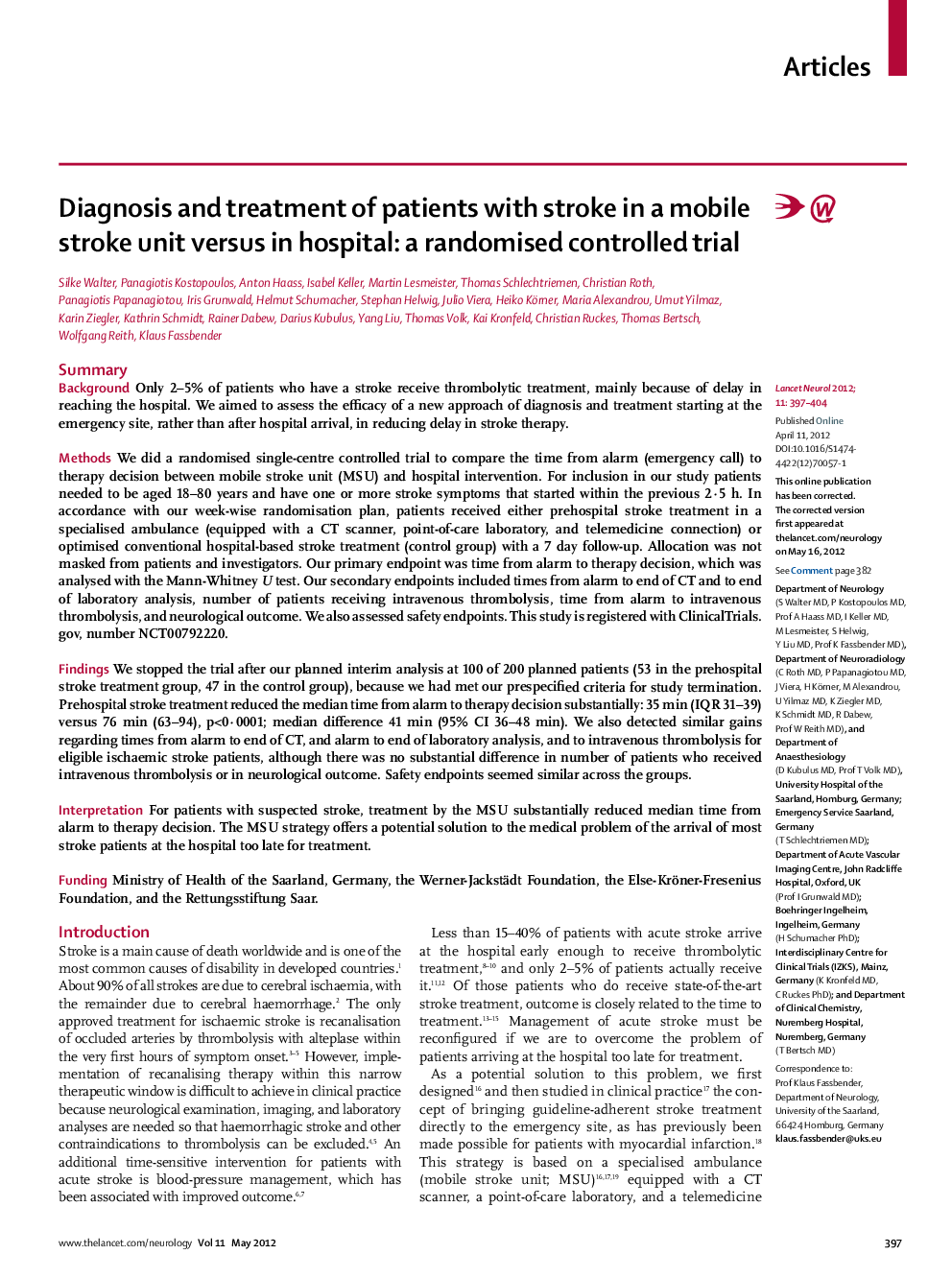| Article ID | Journal | Published Year | Pages | File Type |
|---|---|---|---|---|
| 3066914 | The Lancet Neurology | 2012 | 8 Pages |
SummaryBackgroundOnly 2–5% of patients who have a stroke receive thrombolytic treatment, mainly because of delay in reaching the hospital. We aimed to assess the efficacy of a new approach of diagnosis and treatment starting at the emergency site, rather than after hospital arrival, in reducing delay in stroke therapy.MethodsWe did a randomised single-centre controlled trial to compare the time from alarm (emergency call) to therapy decision between mobile stroke unit (MSU) and hospital intervention. For inclusion in our study patients needed to be aged 18–80 years and have one or more stroke symptoms that started within the previous 2·5 h. In accordance with our week-wise randomisation plan, patients received either prehospital stroke treatment in a specialised ambulance (equipped with a CT scanner, point-of-care laboratory, and telemedicine connection) or optimised conventional hospital-based stroke treatment (control group) with a 7 day follow-up. Allocation was not masked from patients and investigators. Our primary endpoint was time from alarm to therapy decision, which was analysed with the Mann-Whitney U test. Our secondary endpoints included times from alarm to end of CT and to end of laboratory analysis, number of patients receiving intravenous thrombolysis, time from alarm to intravenous thrombolysis, and neurological outcome. We also assessed safety endpoints. This study is registered with ClinicalTrials.gov, number NCT00792220.FindingsWe stopped the trial after our planned interim analysis at 100 of 200 planned patients (53 in the prehospital stroke treatment group, 47 in the control group), because we had met our prespecified criteria for study termination. Prehospital stroke treatment reduced the median time from alarm to therapy decision substantially: 35 min (IQR 31–39) versus 76 min (63–94), p<0·0001; median difference 41 min (95% CI 36–48 min). We also detected similar gains regarding times from alarm to end of CT, and alarm to end of laboratory analysis, and to intravenous thrombolysis for eligible ischaemic stroke patients, although there was no substantial difference in number of patients who received intravenous thrombolysis or in neurological outcome. Safety endpoints seemed similar across the groups.InterpretationFor patients with suspected stroke, treatment by the MSU substantially reduced median time from alarm to therapy decision. The MSU strategy offers a potential solution to the medical problem of the arrival of most stroke patients at the hospital too late for treatment.FundingMinistry of Health of the Saarland, Germany, the Werner-Jackstädt Foundation, the Else-Kröner-Fresenius Foundation, and the Rettungsstiftung Saar.
